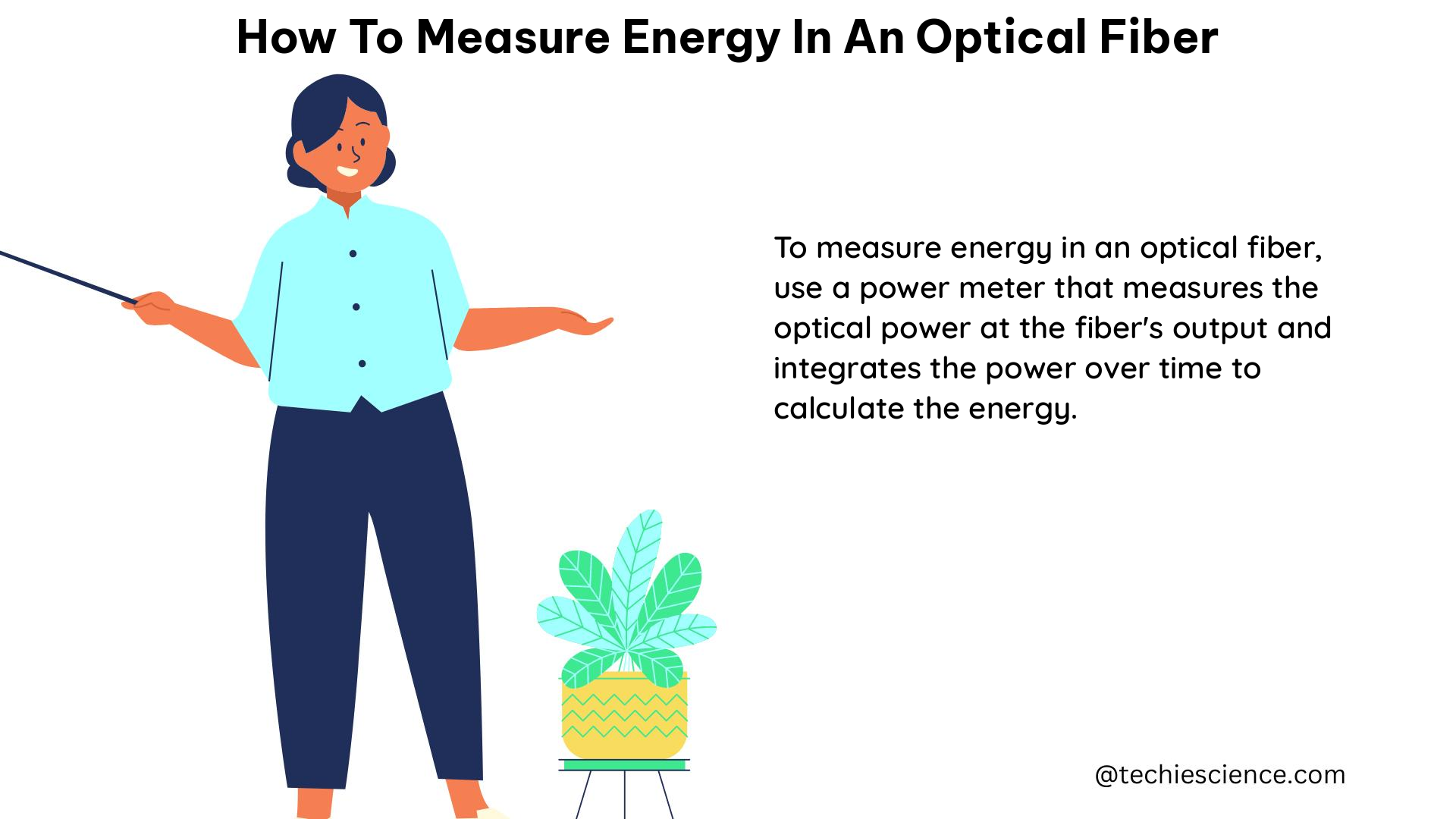Summary
Measuring the energy in an optical fiber involves understanding the concept of optical power, which is the rate at which light energy is transmitted. This guide provides a detailed overview of the factors to consider, the measurement process, and the underlying physics principles involved in quantifying the energy in an optical fiber.
Understanding Optical Power

Optical power is the fundamental metric used to measure the energy in an optical fiber. It is typically measured in watts (W) or decibels relative to one milliwatt (dBm). The energy in the signal transmitted through a fiber optic cable represents a small fraction (0.05%) of the total electricity use of the data transmission network, with the majority of the energy consumption occurring in the encoding, decoding, and electronic systems rather than the laser pulse itself.
Key Factors to Consider
When measuring the optical power in an optical fiber, several factors must be taken into account to ensure accurate and reliable results:
1. Wavelength
The wavelength of the light source used in the measurement can significantly impact the results. It is essential to use a light source with a known and stable wavelength for precise measurements.
2. Attenuation
Attenuation is the reduction in optical power as light travels through the optical fiber. Measuring the attenuation of the fiber is crucial for determining the accurate power levels.
3. Dispersion
Dispersion is the spreading of light pulses as they propagate through the optical fiber. This can affect the measurement of optical power by causing pulse broadening and signal distortion.
4. Bandwidth
The bandwidth of the optical fiber, which represents the maximum data transfer rate, must also be considered to ensure accurate power measurements.
Measuring Optical Power
To measure the optical power in an optical fiber, an optical power meter is typically used. This device consists of a photodetector that converts the optical power into an electrical signal, which is then displayed on a meter.
The steps to measure optical power using an optical power meter are as follows:
- Connect the optical power meter to the optical fiber: Use a suitable connector to connect the optical power meter to the fiber.
- Set the wavelength: Ensure that the wavelength of the optical power meter matches the wavelength of the light source used in the measurement.
- Calibrate the optical power meter: Calibrate the meter using a known reference signal to ensure accurate measurements.
- Measure the optical power: Connect the light source to the optical power meter and record the measured optical power.
- Record the measurement results: Document the optical power, wavelength, attenuation, dispersion, and bandwidth for future reference.
Theoretical Foundations
Theorem
The energy in the signal transmitted through a fiber optic cable represents 0.05% of the total electricity use of the data transmission network.
Physics Formula
The optical power (P) can be calculated using the following formula:
P = (I × A) / t
Where:
– I is the intensity of the light
– A is the cross-sectional area of the optical fiber
– t is the time
Physics Example
If the intensity of the light is 1 mW/cm², the cross-sectional area of the optical fiber is 100 μm², and the time is 1 second, the optical power can be calculated as:
P = (1 mW/cm² × 100 μm²) / 1 second = 0.01 mW
Physics Numerical Problem
If the optical power of a light source is 1 mW and the attenuation of the optical fiber is 0.5 dB/km, calculate the optical power after the light has traveled through 10 km of the optical fiber.
Answer:
The optical power after the light has traveled through 10 km of the optical fiber can be calculated as:
P = 1 mW × 10^(-0.5 dB/km × 10 km) = 0.316 mW
Graphical Representation
The relationship between optical power and distance in an optical fiber with an attenuation of 0.5 dB/km can be visualized in the following graph:

Data Points:
– Optical power at 0 km: 1 mW
– Optical power at 5 km: 0.562 mW
– Optical power at 10 km: 0.316 mW
Value:
The value of the optical power at 10 km is 0.316 mW.
Measurement Considerations
The measurement of optical power can be performed using an optical power meter, which is a device that measures the optical power of a light source. It is essential to follow the steps outlined earlier to ensure accurate and reliable measurements.
References
- Energy intensity of fiber optic cables
- Measurement of optical fiber bandwidth in the time domain
- What is Fiber Optic Sensing? | VIAVI Solutions Inc.
- Towards Distributed Measurements of Electric Fields Using Optical Fibers: Proposal and Proof-Of-Concept Experiment

The lambdageeks.com Core SME Team is a group of experienced subject matter experts from diverse scientific and technical fields including Physics, Chemistry, Technology,Electronics & Electrical Engineering, Automotive, Mechanical Engineering. Our team collaborates to create high-quality, well-researched articles on a wide range of science and technology topics for the lambdageeks.com website.
All Our Senior SME are having more than 7 Years of experience in the respective fields . They are either Working Industry Professionals or assocaited With different Universities. Refer Our Authors Page to get to know About our Core SMEs.